Potřebujeme váš souhlas k využití jednotlivých dat, aby se vám mimo jiné mohly ukazovat informace týkající se vašich zájmů. Souhlas udělíte kliknutím na tlačítko „OK“.
ASTM D4832-10
Standard Test Method for Preparation and Testing of Controlled Low Strength Material (CLSM) Test Cylinders
Automaticky přeložený název:
Standardní zkušební metoda pro přípravu a zkoušky kontrolované Low pevného materiálu (CLSM) Zkušební válce
NORMA vydána dne 15.1.2010
Informace o normě:
Označení normy: ASTM D4832-10
Poznámka: NEPLATNÁ
Datum vydání normy: 15.1.2010
Kód zboží: NS-28809
Počet stran: 6
Přibližná hmotnost: 18 g (0.04 liber)
Země: Americká technická norma
Kategorie: Technické normy ASTM
Kategorie - podobné normy:
Anotace textu normy ASTM D4832-10 :
Keywords:
backfill, CLSM, compressive strength, construction control, mix design, quality control, soil stabilization, CLSM (controlled low strength material), Compression testing--soil-cement, Concrete test specimens, Cylindrical concrete specimens, Molds, Slurries, Soil-cement, Specimen preparation (for testing)--soil, ICS Number Code 91.100.10 (Cement. Gypsum. Lime. Mortar)
Doplňující informace
| Significance and Use | ||||||||||||||||||||||||||||
|
This test method provides standardized requirements for the preparation, curing, transporting and testing of test cylinders of CLSM under field conditions by replicating a “field cure” of the material. If the cylinders are field cured, as stipulated herein, the resulting compressive strength test data may be used for the following purposes: Acceptance testing for specified strength, Checking the adequacy of mixture proportions for strength, Quality control, Determination of whether the CLSM is capable of being put in service, Adequacy of curing. CLSM is typically used as a backfill material around structures, particularly in confined or limited spaces. Compressive strength testing is performed to assist in the design of the mix and to serve as a quality control technique during construction. Mix design is typically based on 28-day strengths and construction control tests performed 7 days after placement. The compressive strength(s) and other test age(s) will vary according to the requirements for the end product. Additional information on the use and history of CLSM is contained in Appendix X1. This test is one of a series of quality control tests that can be performed on CLSM during construction to monitor compliance with specification requirements. The other tests that can be used during construction control of CLSM are Practice D5971 and Test Methods D6023, D6024, and D6103. There are many other combinations of soil, cement, fly ash (cementitious or not), admixtures, water quality or other materials that could be tested using this method. The mixtures will vary depending on the intended use, availability of materials, and placement requirements. Note 1—The quality of the result produced by this standard is dependent on the competence of the personnel performing it, and the suitability of the equipment and facilities used. Agencies that meet the criteria of Practice D3740 are generally considered capable of competent and objective testing/sampling/inspection/and the like. Users of this standard are cautioned that compliance with Practice D3740 does not in itself assure reliable results. Reliable results depend on many factors; Practice D3740 provides a means of evaluating some of those factors. |
||||||||||||||||||||||||||||
| 1. Scope | ||||||||||||||||||||||||||||
|
1.1 This test method covers procedures for the preparation, curing, transporting and testing of cylindrical test specimens of controlled low strength material (CLSM) for the determination of compressive strength. 1.2 This test method covers CLSM materials that have a higher strength than the soil but less than 8400 kPa (1200 psi). Typical strengths for most applications fall between 350 to 700 kPa (50 to 100 psi). 1.3 The CLSM used to make the molded specimens shall be sampled after all on-site adjustments have been made to the mixture proportions, including the addition of mix water and any admixtures. 1.4 This test method may be used to prepare and test cylindrical specimens of other mixtures of soil and cementitious materials, such as self-cementing fly ashes. 1.5 CLSM is also known as flowable fill, controlled density fill, soil-cement slurry, soil-cement grout, unshrinkable fill, K-Krete, and other similar names. 1.6 All observed and calculated values shall conform to the guidelines for significant digits and rounding established in Practice D6026. 1.6.1 The procedures used to specify how data are collected/recorded and calculated in this standard are regarded as the industry standard. In addition, they are representative of the significant digits that should generally be retained. The procedures used do not consider material variation, purpose for obtaining the data, special purpose studies, or any considerations for the user’s objectives; and it is common practice to increase or reduce significant digits of reported data to be commensurate with these considerations. It is beyond the scope of this standard to consider significant digits used in analysis methods for engineering design. 1.7 The values stated in SI units are to be regarded as the standard. The inch-pound equivalents given in brackets are, in most cases, rationalized units and are shown for information only. 1.8 This standard does not purport to address all of the safety concerns, if any, associated with its use. It is the responsibility of the user of this standard to establish appropriate safety and health practices and determine the applicability of regulatory limitations prior to use. See Section 7. |
||||||||||||||||||||||||||||
| 2. Referenced Documents | ||||||||||||||||||||||||||||
|
Podobné normy:
Historická
1.8.2012
Historická
15.12.2011
Historická
1.8.2012
Historická
1.8.2012
Historická
1.8.2012
Historická
1.8.2012


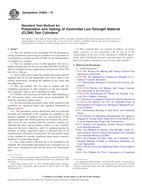
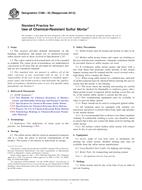 ASTM C386-93(2012)..
ASTM C386-93(2012)..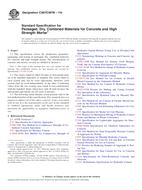 ASTM C387/C387M-11b..
ASTM C387/C387M-11b..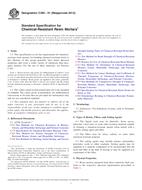 ASTM C395-01(2012)..
ASTM C395-01(2012)..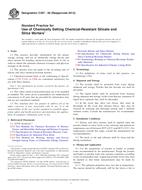 ASTM C397-00(2012)..
ASTM C397-00(2012)..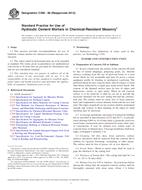 ASTM C398-98(2012)..
ASTM C398-98(2012)..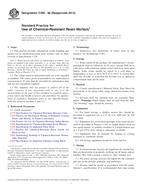 ASTM C399-98(2012)..
ASTM C399-98(2012)..
 Cookies
Cookies
